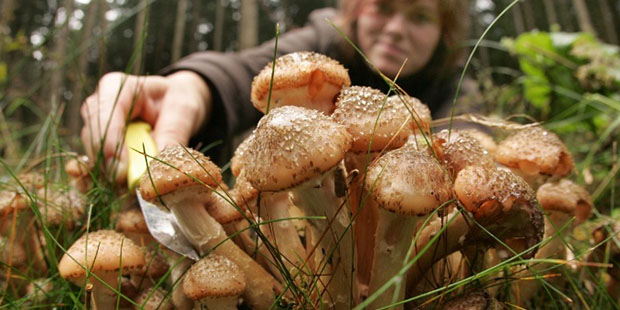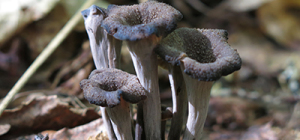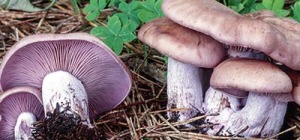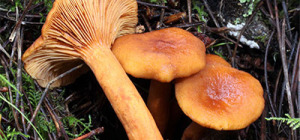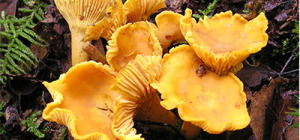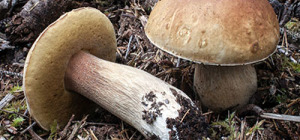Porcinis, black trumpets and candy caps, oh my! Mushroom foraging in the Santa Cruz area most likely brings to mind the beautiful fan-shaped yellow chanterelle, but the oak, redwood and mixed pine forests of the area have much, much more to offer in the way of fungus among us.
Chef Zachary Mazi of LionFish SupperClub, with 15 years of mushroom foraging experience under his belt, has been leading me on excursions through the damp forests of the area this fall and winter. These trips have become an exciting and productive pastime, and I recently made my first solo discovery of candy caps. Nothing can compare to the flush of excitement upon that first prized mushroom discovery – it feels like striking gold – edible, delicious, buttery gold.
For those interested in learning about mushroom foraging, the Fungus Federation of Santa Cruz is a wealth of resources in all things fungi. Newcomers to foraging should join FFSC, go on organized forays, spend time with experts doing identification at events, take classes such as those offered at FFSC, and use a good field guide such as Mushrooms Demystified by local mycologist and founder of FFSC David Arora.
Leave the identification up to the experts, as most edible mushrooms have toxic “look-alikes,” some even deadly. Wild mushrooms are no joke!
Before you go, read ‘The Mycophagist’s Ten Commandments’ on the FFSC’s website to learn about responsible foraging.
This guide was originally published on Feb 1, 2016

